Remembering the black troops that built the most difficult/expensive project during WWII
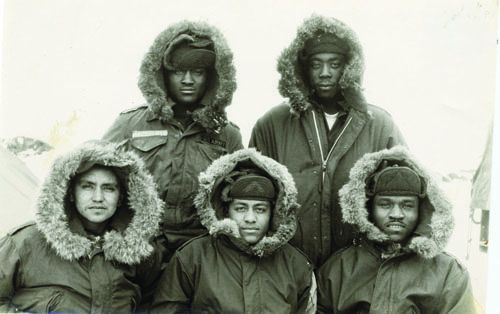
The attack on Pearl Harbor in Hawaii on December 7, 1941,
would bring the United States into World War II, but it also raised a concern
that the U.S. Territory of Alaska was vulnerable to Japanese attack. The Aleutian
Islands off southwest Alaska were closer to Japan than any point in North
America. In the event of a Japanese invasion, the Alaska-Canada highway (ALCAN) would be
necessary to protect Alaska civilians.
Overland travel by car, truck, or train between the United
States and the Alaskan territory at that time was just not possible due to the
rugged topography, and Canada did not have an incentive to build a connecting
road through its territory north of Dawson Creek.
So, in 1942, President Franklin Roosevelt along with the
Canadian government authorized the construction of the Alaska-Canada Highway
(ALCAN) to connect Alaska to the continental United States.
Construction of the highway begin on March 8, 1942, but, in order
for this highway to prove effective, the speed in which it was constructed was
essential to the military’s needs; the Alaska-Canada Highway needed to be built
in 8 months’ time.
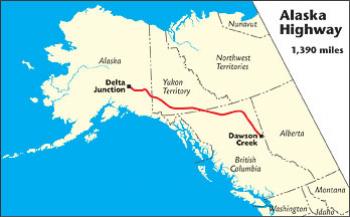
To complete this grueling highway in just 8 months, the U.S.
government hired private contractors and also commissioned the Army Corps of
Engineers. Due to World War II, many members of the Army Corps of Engineers
were in the South Pacific assisting with war efforts. This led to the need for
more manpower to complete the administration’s ambitious Alaska Highway
project. As a result, the War Department led by Colonel William M. Hoge, took
the historic step of deploying Black/African-American regiments of the Army Corps of
Engineers.
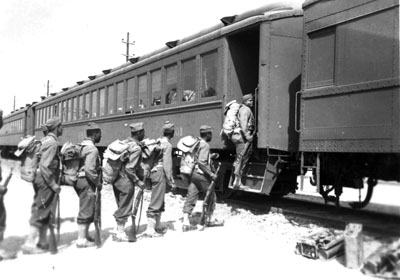
Approximately
5,000-7,000 of the initial 11,000 troops assembled to complete the highway and
install the companion Canol pipeline were Black. There were four regiments of
African-American engineers involved in building the Alaska-Canada Highway, the
93rd Engineer General Service Regiments, the 95th Engineer General
Service Regiments, the 97th Engineer General Service Regiment and the 388th
Engineer Battalion. Theirs were the first black regiments deployed outside the
lower 48 states during the war.
In the interest of speed, officials decided to build the
road in two phases. A pioneer road would be carved out of the difficult terrain
in 1942 to open the route for supply trucks by year's end. The U.S. Army Corps of Engineers was to build
the pioneer road, with Army engineering units and private contractors. Initially, the Army divided the 1,500-mile project into
five segments, with private contractors responsible for the portion from Whitehorse
to Big Delta, about 560 miles. But after proving to be a very difficult feat to
complete, the contractors work was extended by 100 miles to the east.
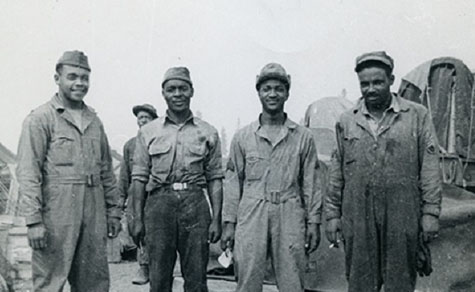
Since approval of the Selective Service Act of 1940, Black
American soldiers had been drafted into the Army on the same terms as whites,
but as Heath Twichell explained in his book on the Alaska Highway,
"Segregation's legacy of bigotry and prejudice severely limited the
possibilities" for the work they would do:
“As a result, relatively few black infantry, armor, or artillery
units were organized during World War II… In the end, black soldiers were assigned to
more than their share of units engaged in low-tech, high-sweat duties in the
Engineers and Quartermaster Corps. Although the Corps of Engineers put most of
its new black soldiers into general-purpose construction battalions and regiments,
shortages of heavy equipment sometimes resulted in the black units' being
issued fewer bulldozers and more shovels and wheelbarrows than the white units
got.”
Another touchy issue was where to station the new black
units. In the United States, military leaders felt they had to worry about the
impact of large numbers of young black soldiers on nearby civilian communities.”
[Northwest , p. 97-98]
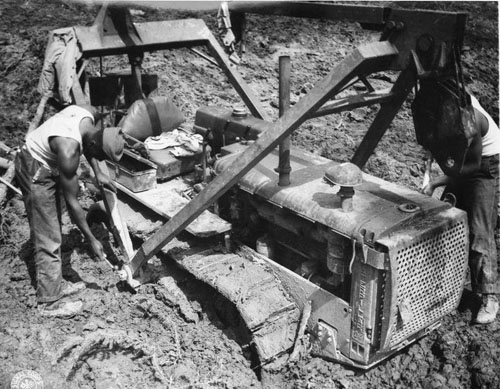
The enlisted men, most of them from the South, faced racial
discrimination from white officers. The black soldiers were barred from
entering any towns for fears from white soldiers that they would procreate a “mongrel”
race with local women.
During the construction of the highway, the black American
soldiers endured winter conditions they had never experienced before, including
record low temperatures, the temperatures ranged from 90 degrees above zero in
summer to 70 degrees below zero during the winter. The black troops also had to fight swamps,
rivers, ice and cold, whiles battling the segregation with in their own corp.
Jim Sutton, a white American soldier who had worked on the highway project
alongside the blacks stated:
"They were up here when we got up here. We were put in barracks, wooden barracks, and we had stoves and everything. These poor black people were doing the same job as we were and they had them in tents. I didn't think that was really fair."
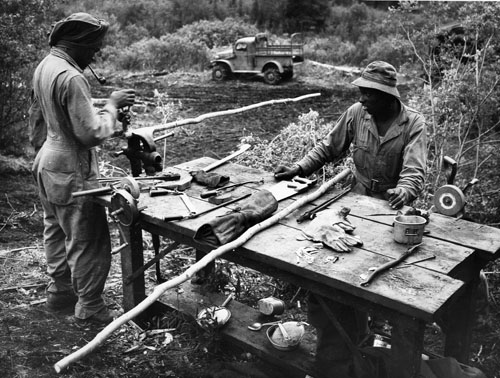
Housing wasn’t the only form of injustice the black soldiers
faced, but many times struggling through long difficult trips to reach the project
site with their equipment, the black American troops found that their best equipment
would be shifted to the white units.
Although, in practice the African-Americans were involved in many phases of construction, often never working with the white troops, but performed the more grueling labor intense work, while white troops sometimes less skilled, managed and directed. For this reason, many of the soldiers felt they were fighting two wars, one against the Axis (Japan, Germany and Italy) and a second against segregation.
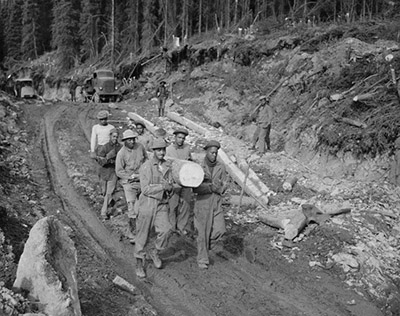
After cutting an access road over Mentasta Pass from Slana
to Tok, the all black 97th Engineers battalion was used to perform the grueling work of speeding
the opening of the northernmost third of the Alaska Highway by helping the
private contractors and the 18th Engineers close the gap between Whitehorse and
Big Delta. Similarly, after opening a trail from Carcross to help the 340th
Engineers reach Teslin, another all black battalion of the 93rd Engineers
would start work on the pioneer road from that point toward Whitehorse, during
freezing conditions.
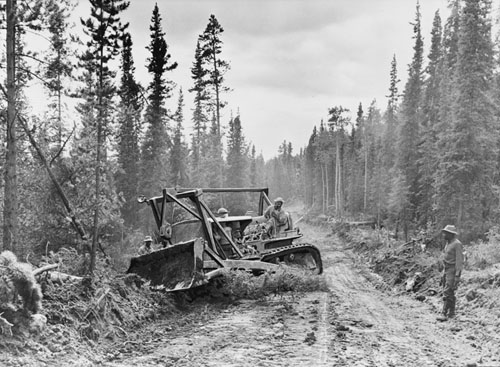
With private contractors and Army engineering units working on segments of the Alaska Highway, gaps began to close in August. By the end of September, only the most difficult sections, through eastern Alaska and the southwest corner of the Yukon, remained to be completed. [North to Alaska , p. 130]
The final gap was closed on October 29, 1942, south of Kluane Lake. Coates quoted Malcolm MacDonald, British high commissioner to Canada, on the final moments:
The final meeting between men working from the south and men working from the north was dramatic. They met head on in the forest. Corporal Refines Sims, Jr., a negro from Philadelphia [of the 97th Engineers] . . . was driving south with a bulldozer when he saw trees starting to topple over on him. Slamming his big vehicle into reverse he backed out just as another bulldozer driven by private Alfred Jalufka of Kennedy, Texas, broke through the underbrush. Jalufka had been forcing his bulldozer through the bush with such speed that his face was bloody from scratches of overhanging branches and limbs. That historic meeting between a negro corporal and white private on their respective bulldozers occurred 20 miles east of the Alaska-Yukon Boundary at a place called Beaver Creek. [North to Alaska , p, 130-131]
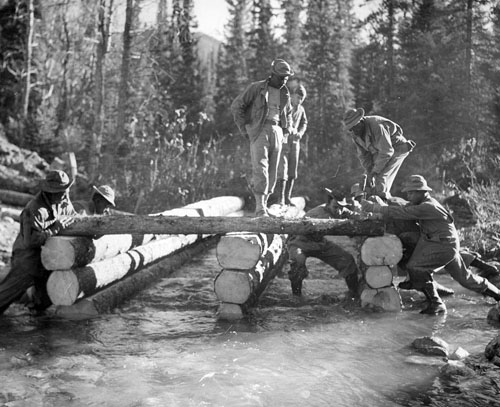
One of the greatest accomplishment of the black troops was Sikanni
Chief River Bridge. The Sikanni Chief River is a fast-moving river that is over
300 feet wide located about 162 miles outside of Dawson Creek, Canada. The
African-American engineers built the bridge without heavy equipment, utilizing
minimal supplies and in miserable conditions. They used hand tools, saws, and
axes to build the bridge in less than three days using lumber from nearby
trees.
During some phases of the bridges construction the black
troops had to plunge chest deep into the river’s freezing and rapidly moving
waters to set trestles. The soldiers used the headlights of trucks to keep
working at night while singing work chants and chain gang songs. Despite the
military still being segregated, after witnessing this amazing feat, Col. Heath Twichell Sr. ordered his white
officers to eat with the black enlisted men.
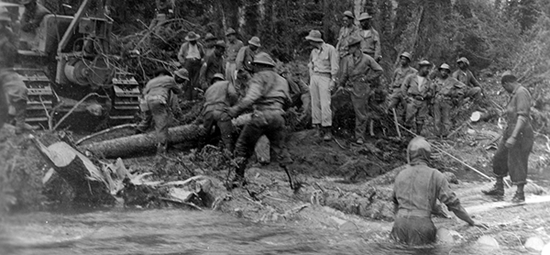
Over the years, as public attitudes changed, the
African-Americans who helped build the pioneer trail received recognition for
their accomplishment. Brinkley interviewed some of the veterans:
“They all talked to me about duty for country and reminisced about their harsh living conditions, tasteless food, and bitter winters where frostbite was their primary foe. Stories about wading chest deep into freezing lakes to erect bridge trestles or having a finger fall off when the temperature hit a record -70o F or lowering the coffin of a comrade into the cold ground conjured bleak memories of Jack London's most brutal tales like "To Build a Fire" or "Burning Sun." Snowdrifts were often twenty feet deep. "For months on end, I couldn't get a real night's sleep," one veteran recalled. "I had nightmares I was freezing to death." Although these black soldiers had at their disposal 11,107 pieces of equipment, trucks, tractors, crushers, graders, and bulldozers, breakdowns occurred hourly. The job was daunting. Never before, it seems, had so many survey sticks been hammered into the earth at a given time. To keep morale up they often chanted old southern work tunes like "Steel-Driving Song" and "Swing Low, Sweet Chariot." With brawn and courage and valor they persevered, completing the Alcan Highway in just over eight months, with the official opening on 21 November 1942. [Alcan , p. 10]
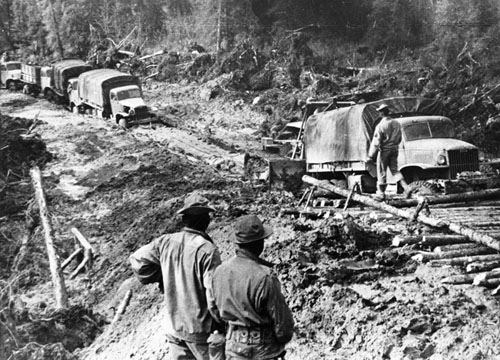
The African-American regiments that built the Alaska-Canada
Highway established a reputation for excellence especially in the field of
bridge building. However, their accomplishments were consistently ignored by
mainstream media and press. It took decades for them to receive proper
recognition for their achievements. Some say they were as “legendary” as the
Tuskegee Airmen and the Buffalo Soldiers.
Many people attribute the success of these African-American
engineers during the Alaska-Canada Highway project as one of the events that
led to eventual desegregation of the military in 1948. Some call the ALCAN
Highway the “Road to Civil Rights” for this reason.
After just over 8 months , the Alaska-Canada Highway (ALCAN)
was completed on November 21, 1942. The ALCAN highway project is still
considered one of the biggest and most difficult construction projects ever
completed by the US Army Corps of Engineers. It stretches 1,422 miles from
Dawson Creek, British Columbia in Canada to Big Delta, Alaska. The project cost
about $138 million dollars and was the most expensive World War II construction
project.
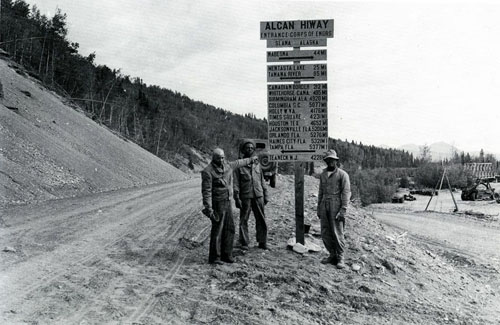
Approximately 30 men died during the Alaska-Canada Highway construction project. In 1992 there were over 2,000 different celebrations held to commemorate the highway's 50th anniversary, but none of them honored, and most hardly mentioned, the black units who represented one of the projects largest portions of manpower. James Eaton, curator of the Black Archives Research Center and Museum at Florida A&M University in Tallahassee, called the soldiers, "A lost page in history."
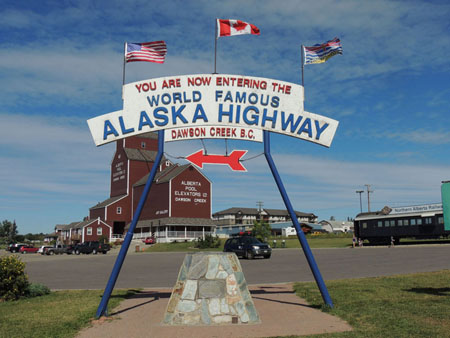
On July 4, 1992, the city of Anchorage, Alaska invited several of the veteran black troops from the corp. of engineers to participate in the city's parade down Main Street. Two of them, Albert E. France andDonald W. Nolan, Sr., were from Baltimore. France was a 75-year old retired railroad worker, while Nolan was a 72-year old retired postal worker, both recalled in a newspaper interview, the first thing they remembered from working on the Alaska-Canada Highway was the cold:
"It was awful
cold and it snowed for days," recalled Mr.France . . . . It was the
coldest winder on record in the territory.
"Leather would freeze," recalled Mr. Nolan . . . .
"We'd take galoshes, rubber galoshes - we called them 'Arctics' - and we'd
wear three, four pairs of socks we would double up on pants. We slept on the round
in pup tents."
“Food was never plentiful. C-rations, bittersweet chocolate
and "hardcracks" might be all a soldier would get to eat after the
harsh climate cut off supply routes.”
"We'd kill a bear, a huge black bear," said Mr.
Nolan,"about 9, 10 feet high, and those chops were delicious."
When the snow stopped, the rains started and the rivers swelled.
In summer, mosquitoes droned like airplanes and the "muskeg," a
uniquely Alaskan bog, swallowed tractors… In that barren landscape, the
off-work hours could seem exceptionally long.
Looking back, Nolan said he was glad to have served on the project. "You have something to tell your kids." [The Baltimore Sun , July 4, 1992]
Memorials for the black soldiers that helped in the competition
of the ALCAN Highway are scattered along
the highways 1,400 miles path. One of the most recognized memorials is the‘Black
Veterans Memorial Bridge’ which was dedicated in 1993 to the African-American
engineers who died during the construction project.
Congress in 2005 said that the wartime service of the four
regiments covered here contributed to the eventual desegregation of the Armed
Forces.
